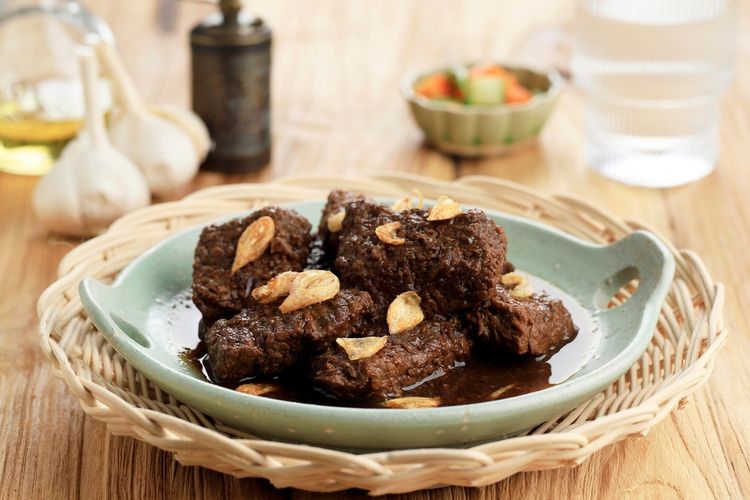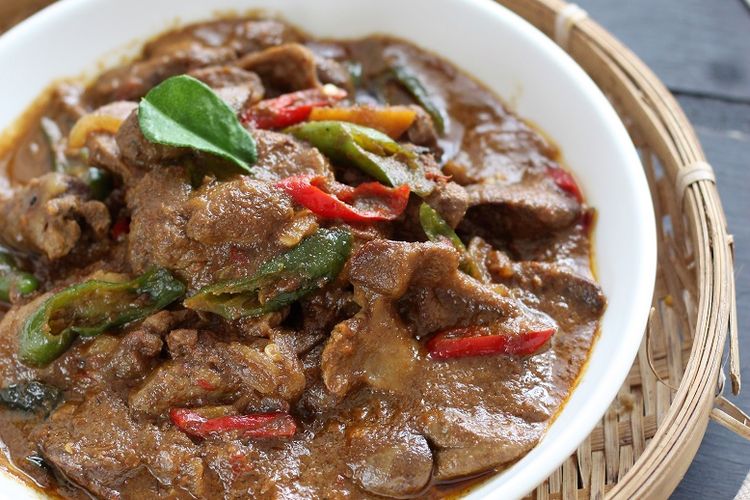JAKARTA, KOMPAS.com – Semur, a typical Indonesian dish with a deep brown color and sweet and savory taste, has a long and interesting history. Even though it is now known as one of the culinary delights of the archipelago, the historical traces of semur show the great influence of the interaction of Indonesian and Dutch culture.
Unsiyah Anggraeni, in his book Multiculturalism of Indonesian Foodwrites that the term semur comes from the Dutch word smoorwhich means a stew with slowly cooked tomatoes and onions.
However, the tradition of boiling meat is not new in Indonesia. Evidence shows that similar cooking techniques have been known since the 9th century, as recorded in inscriptions, reliefs from the Borobudur and Prambanan temples, as well as the ancient Javanese kakawin Gadan Hadanan Prana Wdus.
The tradition of cooking meat using the boiled method with spices shows that stews are part of the archipelago’s original culinary heritage.
Also read: Recipe for quail egg stew mixed with tofu, a warm side dish for the rainy season
 Illustration of soy sauce beef stew with nyemek sauce.
Illustration of soy sauce beef stew with nyemek sauce.What was the role of the Netherlands in the development of Semur?
When the Dutch began to occupy Indonesia in the 16th century, the influence of Dutch culture permeated various aspects of life, including culinary.
One of the dishes introduced is hacheea typical Dutch dish cooked with the technique slow cooking using meat, onions, vinegar, and beef stock.
In the hands of the Indonesian people, hachee undergoing transformation. The use of local spices such as cinnamon, nutmeg and cloves, as well as the addition of sweet soy sauce, produces a stew that is richer in taste and aroma.
This process is an example of cultural acculturation, as foreign influences are adapted to suit local ingredients and tastes.
Also read: Recipe for home-style jengkol stew, boil it first to reduce the smell
How Does Sweet Soy Sauce Change the Identity of Semur?
An important element in semur is sweet soy sauce, which gives it a distinctive sweet taste. Although soy sauce was first introduced by the Chinese, local innovation turned it into a sweet soy sauce made from brown sugar.
This sweet soy sauce gives the stew a unique character and is a distinguishing element from similar dishes in other countries.
The use of sweet soy sauce not only enriches the taste, but also shows the ability of Indonesian people to combine foreign influences with local ingredients, creating truly distinctive dishes.
Also read: Chicken Stew Recipe, Add Potatoes
 Illustration of mutton stew
Illustration of mutton stewHow Does Semur Adapt to Various Traditions?
Over time, semur has become an inseparable part of various traditions in Indonesia. This dish not only shows traces of history, but also illustrates the values of togetherness and religiosity of the community.
The Betawi people, for example, have a tradition of stewing andilan during Eid al-Fitr. This tradition involves collecting funds by residents to buy a buffalo which is then slaughtered and processed into stew.
Meanwhile, in Palembang, malbi stew is served with pineapple chili sauce at wedding celebrations or Eid al-Fitr. In Samarinda, vermicelli stew with chicken is a unique choice served with yellow rice.
Also read: Recipe for ground beef eggplant stew, a practical, nutritious lunch idea
Why is Semur so important in Indonesian culinary history?
Semur is clear evidence of how cultural acculturation creates a rich culinary heritage. This dish not only reflects the blend of Indonesian and Dutch culture, but also shows the ability of the Indonesian people to adapt foreign influences into something authentic.
From ancient inscriptions to modern dining tables, stews continue to evolve with the times. Now stews are not only synonymous with beef, but there are stews filled with tofu, tempeh, and even eggs.
More than just food, stew is a symbol of history, culture and a philosophy of life that depicts harmony amidst differences.
Also read: Mixed Stew Recipe, Cooking with Complete Side Dishes
Listen breaking news And selected news we’re right on your phone. Choose your favorite news channel to access Kompas.com WhatsApp Channel: https://www.whatsapp.com/channel/0029VaFPbedBPzjZrk13HO3D. Make sure you have installed the WhatsApp application.






